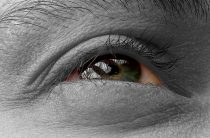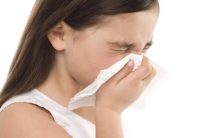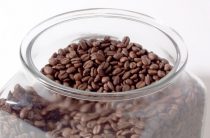Perhaps the most common type of allergy is gluten allergy. The data of the World Health Organization on this issue are very eloquent: every hundredth adult on our planet experiences allergic reactions when this protein is ingested.
Gluten is a structural protein that is the main protein part of cereal seeds. Its largest amount is found in the composition of wheat seeds, where this protein represents 80% of all protein structures. Accordingly, for people suffering from gluten intolerance in one form or another, products made from wheat flour pose the greatest danger. However, the high content of gluten indicates that this flour is of high quality. This is explained by the fact that according to the technology of preparation of flour products, indicators of elasticity and elasticity are of great importance.
Allergy to gluten. Symptoms in adults
Gluten allergy is a high degree of sensitivity of the immune system to gluten in food. In certain people, gluten is not completely absorbed, which means that it injures the mucous membrane of this organ, causing the first symptoms of the inflammatory process. Undigested gluten poses a high danger to beneficial intestinal microflora, which is reduced under its influence. This leads to a state of dysbacteriosis, in which the number of beneficial bacteria decreases and the number of harmful ones increases. Harmful bacteria begin to release their metabolic products into the bloodstream, which cause an immune response, which results in allergy symptoms.
 In sensitive people, gluten, when ingested, causes a complex manifestation of symptoms, both skin manifestations and gastrointestinal disorders.
In sensitive people, gluten, when ingested, causes a complex manifestation of symptoms, both skin manifestations and gastrointestinal disorders.
For skin manifestations, with an allergy to it, the appearance of areas with the formation of vesicles that are filled with a liquid transparent or cloudy-yellow content is characteristic. These places begin to itch strongly, over time, the bubbles turn into a hard crust. Also, if gluten is ingested, symptoms of hives may develop. This condition is characterized by symptoms such as inflammation of the areas, redness, fever. If these manifestations are too extensive, then an increase in body temperature may develop.
Symptoms from the gastrointestinal tract:
- violation of intestinal motility;
- the presence of fatty spots in the stool, which indicates a violation of the digestion of food;
- prolonged and intense pain in the abdomen;
- increased gas formation;
- weakness, sudden weight loss, constant fatigue;
The following symptoms may also be noted: sore throat, headaches, as well as aching sensations in the joints, which resembles the discomfort of a cold.
Intolerance in children
Allergies in children can only develop during the transition to natural feeding. Mother's milk does not contain gluten, since this component is found only in plants. Gluten intolerance very often develops in young children, in the first year of life. Therefore, it is extremely important for mothers to know its symptoms in infants. It must be borne in mind that manifestations of this kind of allergy may not appear immediately, but for example, after a few days. These symptoms include:
- skin rashes that are manifested by diathesis or urticaria;
- excessively loose stools;
- increased gas formation;
- loss of appetite;
- the child often cries, begins to act up for no apparent reason;
- sleep disorders;
It is also necessary to be careful, because the baby may have gluten intolerance, as such, in this case, this protein disrupts the functioning of the stomach and intestines, interferes with the normal absorption of nutrients, which can cause such serious consequences as exhaustion of the child's body and developmental delay .
What to do if the baby is gluten intolerant? Gluten is found in foods such as wheat, rye, barley, oats and foods made from them. Although they are biologically valuable sources of protein, vitamins and carbohydrates, they are not the only foods that can be used to organize a healthy diet for your little one. So, for example, the use of soy products, buckwheat, rice, cornmeal, beans and other gluten-free products serve as a worthy replacement for allergenic products. At the same time, you do not sacrifice the quality of nutrition for the child.
Even for baking, you can use rice, buckwheat, corn flour. It is in no way inferior to the useful, gustatory properties of bakery and other wheat products.
In general, gluten allergy in children is a transient phenomenon. Over time, when the gastrointestinal tract of the crumbs is fully formed, it passes. Therefore, it is better to introduce gluten foods into the baby's diet after a year.
Treatment of allergies in adults
The first thing to do is to completely eliminate foods containing gluten. We remind you that this category includes: rye, wheat, barley and oats. To do this is not at all as difficult as it seems at first glance. Please note that in many soy products, gluten is added as a special additive to give the soy meat a certain consistency. This also applies to many other foods that use gluten.
Remember that it is necessary to exclude not only the cereals themselves containing gluten, but also products made from them. Among them: cookies, all bakery products, dough, pizza, cake and pastries, dishes using breadcrumbs, as well as those in which flour is used as a thickener. We recommend that you carefully read the composition of the dishes when you are visiting or in catering establishments.
Many adults prefer to eat pasta in a dish. It's an easy and delicious way to satisfy your hunger. They cook much faster than ordinary cereals, so pasta products often make up a significant part of the diet of a modern adult. Being products made from wheat flour, they inevitably contain gluten in their composition.
The modern food market offers a healthy alternative for people who are allergic to gluten. We are talking about pasta made from buckwheat or rice flour, which has long been used in the cuisines of Japan, China, Korea and Thailand. They are in no way inferior in taste to similar products made from wheat flour and can serve as an excellent alternative to our usual pasta.
Also, adults should exclude the use of semi-finished products in the form of meat products (shop cutlets, sausages, sausages, sausages, dumplings). Gluten is often used as a binder in their production.
Also remember that gluten is found in many of the foods we are used to, as it is a universal additive. Carefully follow the composition of such, beloved by many, goodies, such as:
- sweets, marmalade, ice cream and other sweets;
- mayonnaise and ketchup;
- various sauces (wheat flour is used as a universal thickener);
- poorly refined alcoholic beverages;
- coffee drinks;
- crab sticks;
- caramel dye;
- shop chips;
- factory-made broths, including their concentrates;
- syrup made from rice;
- flakes soluble in milk.
Medical treatment of gluten allergy in adults
Adult gluten allergy is treated with a wide array of allergy specific and general treatments. In the treatment of gluten allergy in adults, the choice of special medicines is much wider, since the body of an adult is more resistant to the effects of drugs.
In order to eliminate the symptoms of allergies, antihistamines (claritin, erius, diazolin, demidrol, tavegil) and corticosteroids are used. Gluten allergy is a food allergy, so skin manifestations are very common, which are eliminated with the help of special hormonal ointments (prednisolone ointment, elocom, flucinar, diazolin, betamethasone).
When choosing means for treatment, pay attention to their effect on the gastrointestinal tract. Gluten intolerance is characterized by a wide range of gastrointestinal disorders. Therefore, it is very important to choose the right drugs in order to prevent their aggravation.
Remember that only competent specialists have the right to deal with the treatment of an allergic or some other disease. Self-medication can be harmful to health.
















Thank you so much, great, I have been suffering all my life because of this, I have itching on my hands and feet, and all the other symptoms you listed, I have been looking for an answer to my problem all my life ... I thought I was allergic to household chemicals .... thank you again, your article can be said to have saved my life, because not treating this disease is very dangerous for health, relying on our doctors to our own detriment, now is the time when everyone is a doctor for himself .... thanks for your article,
Thanks from me too! I have been suffering from diarrhea all my life, doctors make different diagnoses, 3 years ago I developed an allergy to household chemicals, asthma, and recently an allergy to nail gel from China began. After reading the article, I am shocked. Went to the hospital with diarrhea after eating semolina. But I realized that I was allergic to gluten only after reading the article and comparing the symptoms. On Tuesday, I baked pies from yeast dough, ate in the evening, in the morning I began to twist my stomach, for breakfast, and took it to visit and there again in the afternoon. And everything started again. I am shocked. The hospital is closed, tomorrow I have to work, the work is such that I cannot go to the toilet when I want. I'm going to test for gluten today and start cutting out everything that contains it, which is all I've eaten so far. Thank you!